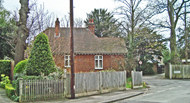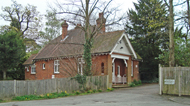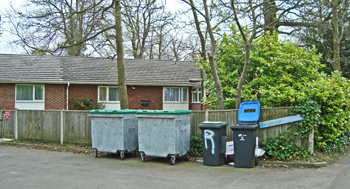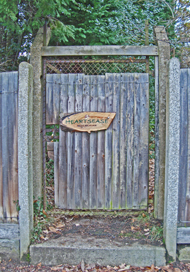Long-stay convalescent. Later, long-stay, chronic, mental handicapped
In 1919 the Invalid Children's Aid Association (ICAA) established a pioneering convalescent home for children recovering from rheumatic heart disease - the Edgar Lee Home in Willesden. In 1924 a second home was opened at the Kurandai Home in Hartfield, Sussex.
In March 1927 the lease of the Kurandai Home was about to expire and the ICAA urgently sought new premises for its 50 patients. Within a few months it purchased a property for £5,575 in West Wickham.
The West Wickham Home of Recovery for Children with Heart Disease was officially opened in October 1927 by Lady Lennard. The Ancient Order of Froth Blowers (AOFB) endowed 17 of its beds, at a cost of £8,500.
The Home was also known as 'Heartsease' and the Heart Home and Hospital. The building was only 15 years old and stood in 9.5 acres of woods and gardens. The ground floor and two large rooms on the first floor had been adapted as wards for 30 children. The staff were accommodated in the remainder of the house.
Two open air wards for 54 children and a Day Room were soon built and, by 1928, the Home could accommodate 84 girls and small boys. To date, almost £20,000 had been spent on setting up and equipping the Home, including £3,000 for the alterations and £7,500 for the new buildings.
The children suffered from rheumatic heart disease (acute rheumatism), a condition that required much rest to allow the heart to recover.
In 1929 the AOFB erected a hut for use by the Girl Guide troop in the Home.
In 1937 a therapeutic bath was installed.
By 1942 the Home had 60 patients, with 45 beds available for children and 20 cots for babies and toddlers.
In 1944 a V1 flying bomb exploded in the nearby Wickham Court Farm, damaging crops and a pumping station. The Home in Woodland Way and 27 houses in Woodlodge Lane were also damaged by the blast.
In 1948 the Home joined the NHS as the Children's Heart Hospital under the control of the Bromley Group Hospital Management Committee, part of the South East Metropolitan Regional Hospital Board. It had 80 beds for long-stay child convalescents.
By 1957 it had 56 beds and, in 1958, its name was changed to Cheyne Hospital.
In 1974 it had 60 beds, but only 35 in 1975 as, presumably, the buildings were replaced with modern bungalow-style residences.
In 1982 there were 50 beds.
In 1989 the Hospital, now under the control of the Ravensbourne NHS Trust, changed its name to the Cheyne Centre. It had 40 beds for long-stay, chronically ill and mentally handicapped children.
At the end of the 1980s most of the land was sold off for housing and, by 1990, the Centre had 18 beds for adults with learning difficulties and physical handicap. In 1994 it had 14 beds.
In 1998 it ceased to be classed as a hospital and became instead a residential home for physically and mentally handicapped adults.
Present status (April 2009)
Three buildings are still in use by the Centre, but Bromley Primary Care Trust intends to hand over the management of the site to Bromley Council who, in turn, would request Golden Lane Housing to take over the properties.
The remainder of the site has been redeveloped for housing, apart from a small wooded area, Cheyne Wood, which is accessed from Spring Park. Cheyne Wood was acquired by the Council in 2004.


It was proposed to convert the gate lodge to the Cheyne Centre into a residence, but it is unclear if the plan has been carried out.

The Cheyne Centre consists of low-level buildings on the east side of the original site.


Most of the site has been redeveloped as Cheyne Park Drive - a gated close of houses.

The Ancient Order of Froth Blowers ceased to exist on 8th December 1931, but the AOFB Girl Guides and Boy Scouts Charity still exists and runs the 'Heartsease' Guide and Scout hut in the grounds of the former Hospital. The entrance is along Woodland Way.

Schlesinger B 1932 Convalescent home treatment for rheumatic children. Hospital Social Service 25, 214-222.
http://cds.bromley.gov.uk (1)
http://cds.bromley.gov.uk (2)
http://wellcomelibrary.org
www.londongardensonline.org.uk
www.parksandgardens.org
www.springparkfilms.org.uk
Return to home page